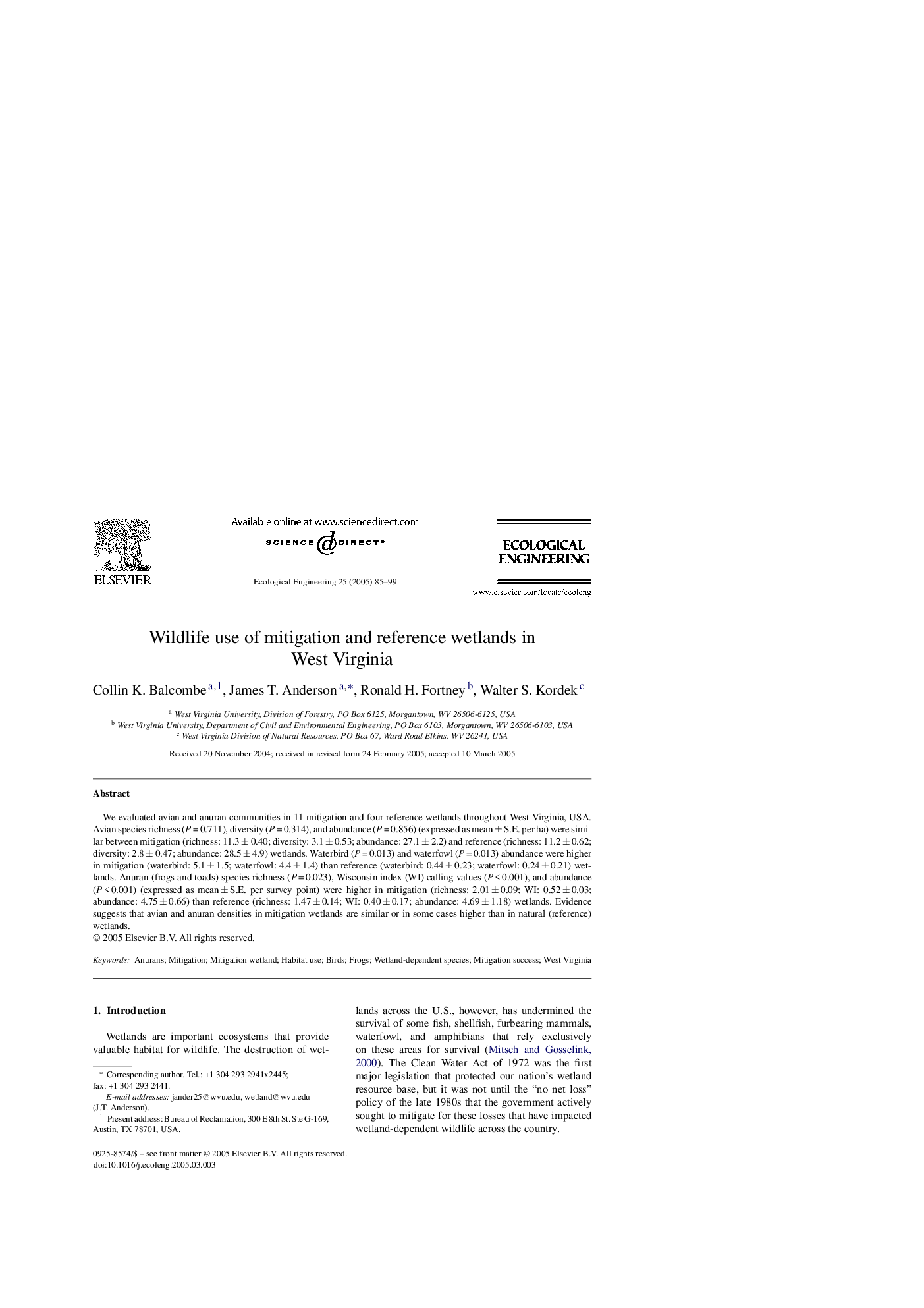| Article ID | Journal | Published Year | Pages | File Type |
|---|---|---|---|---|
| 9447404 | Ecological Engineering | 2005 | 15 Pages |
Abstract
We evaluated avian and anuran communities in 11 mitigation and four reference wetlands throughout West Virginia, USA. Avian species richness (P = 0.711), diversity (P = 0.314), and abundance (P = 0.856) (expressed as mean ± S.E. per ha) were similar between mitigation (richness: 11.3 ± 0.40; diversity: 3.1 ± 0.53; abundance: 27.1 ± 2.2) and reference (richness: 11.2 ± 0.62; diversity: 2.8 ± 0.47; abundance: 28.5 ± 4.9) wetlands. Waterbird (P = 0.013) and waterfowl (P = 0.013) abundance were higher in mitigation (waterbird: 5.1 ± 1.5; waterfowl: 4.4 ± 1.4) than reference (waterbird: 0.44 ± 0.23; waterfowl: 0.24 ± 0.21) wetlands. Anuran (frogs and toads) species richness (P = 0.023), Wisconsin index (WI) calling values (P < 0.001), and abundance (P < 0.001) (expressed as mean ± S.E. per survey point) were higher in mitigation (richness: 2.01 ± 0.09; WI: 0.52 ± 0.03; abundance: 4.75 ± 0.66) than reference (richness: 1.47 ± 0.14; WI: 0.40 ± 0.17; abundance: 4.69 ± 1.18) wetlands. Evidence suggests that avian and anuran densities in mitigation wetlands are similar or in some cases higher than in natural (reference) wetlands.
Related Topics
Life Sciences
Agricultural and Biological Sciences
Ecology, Evolution, Behavior and Systematics
Authors
Collin K. Balcombe, James T. Anderson, Ronald H. Fortney, Walter S. Kordek,
